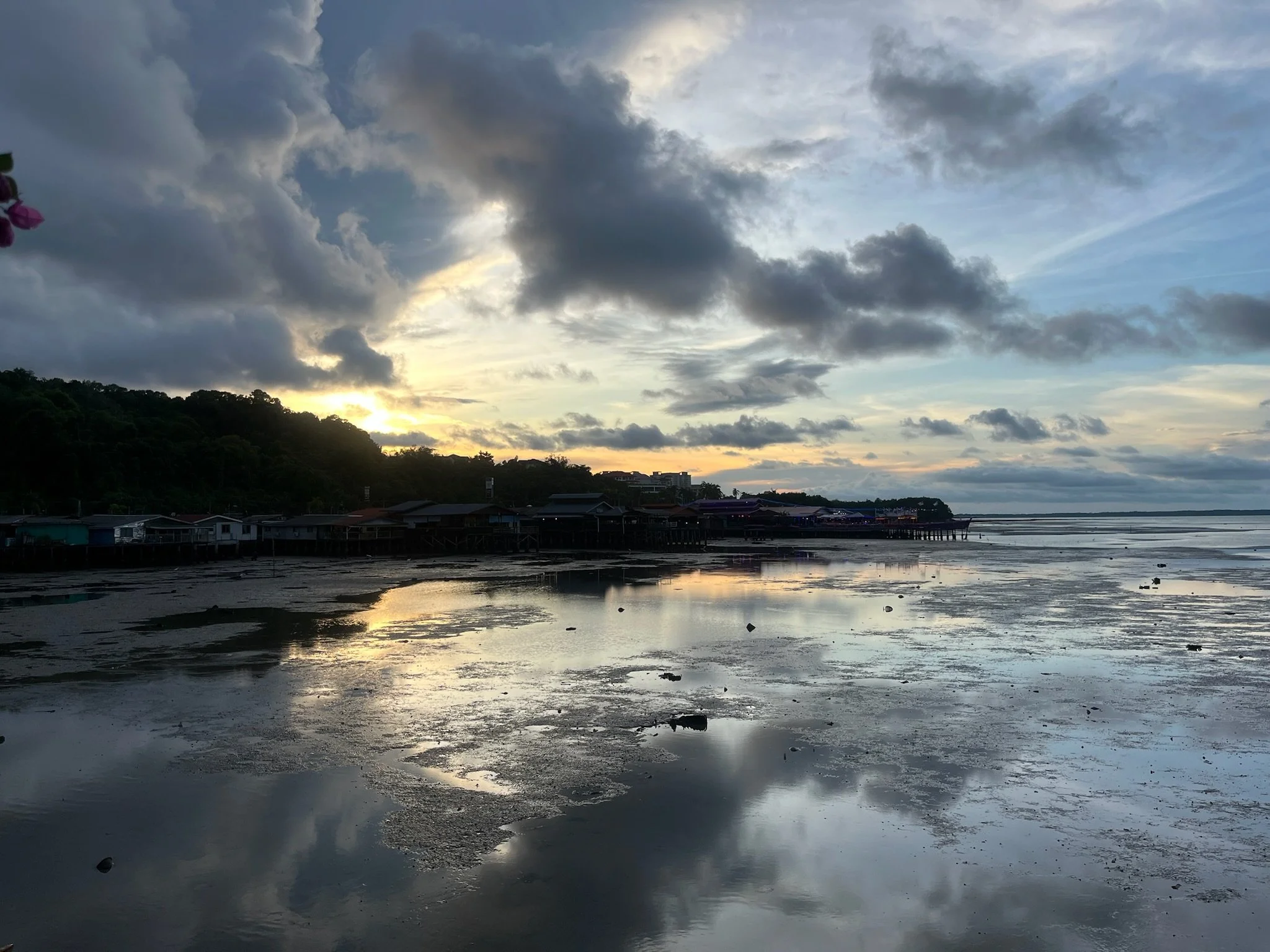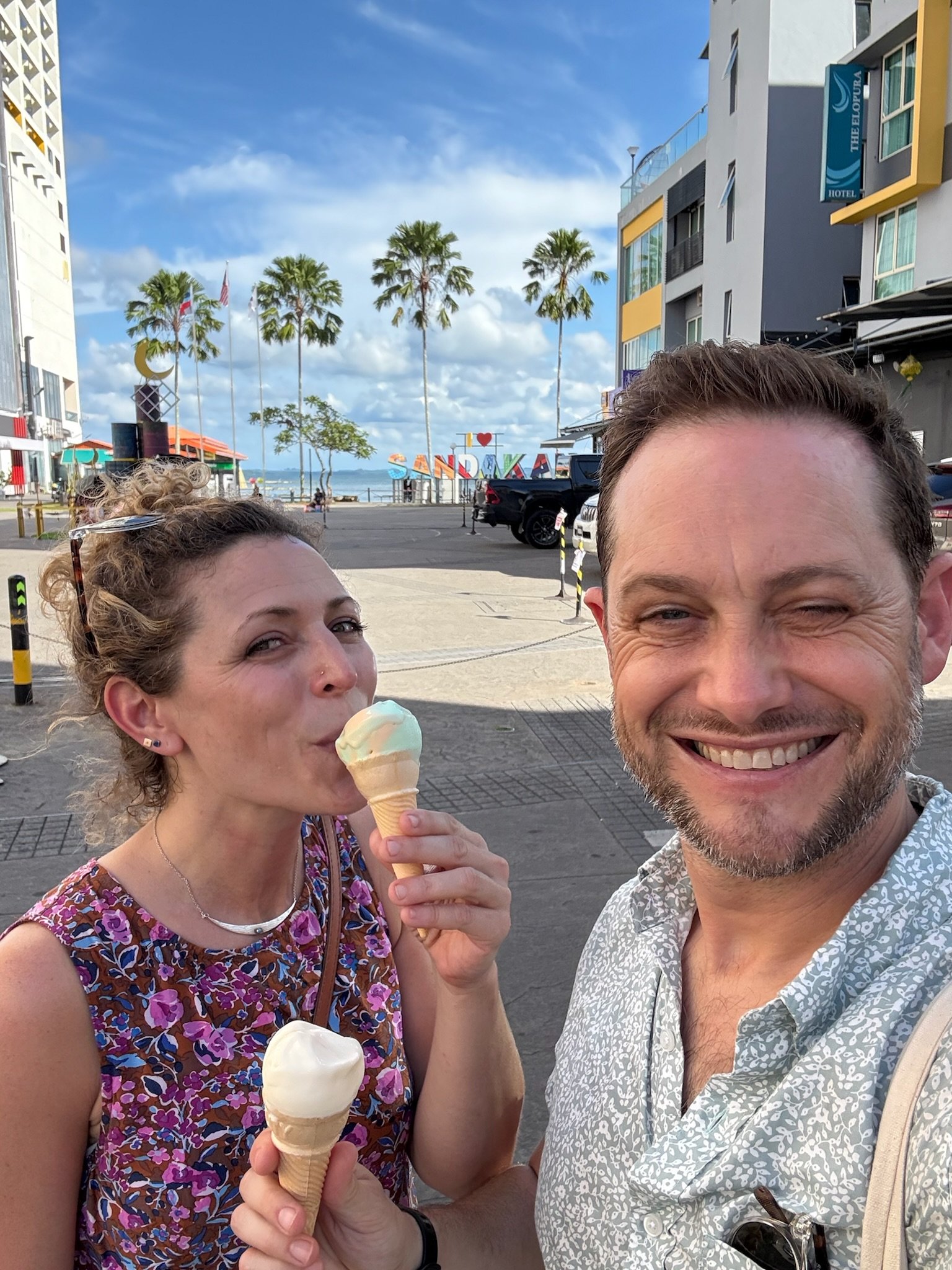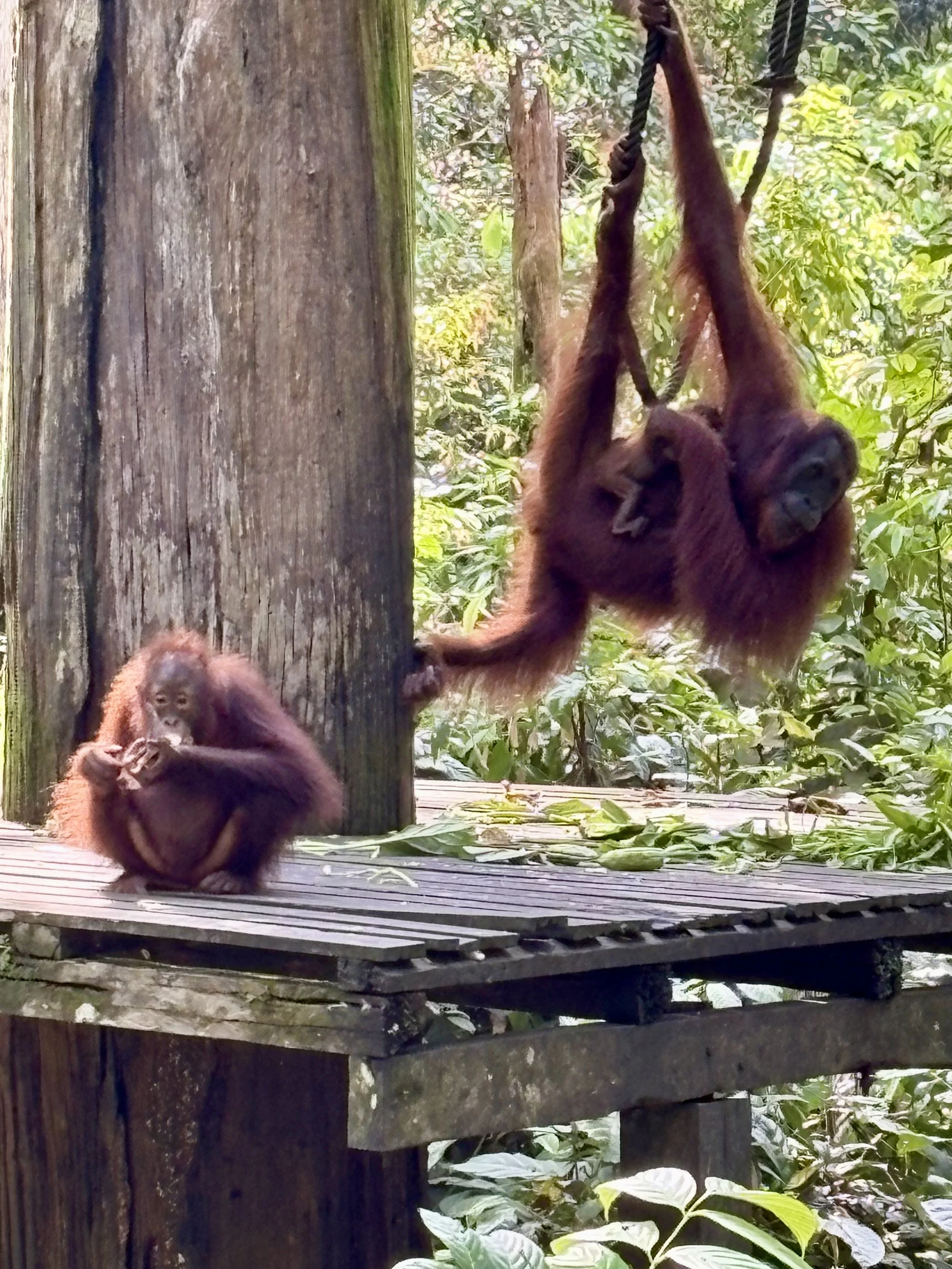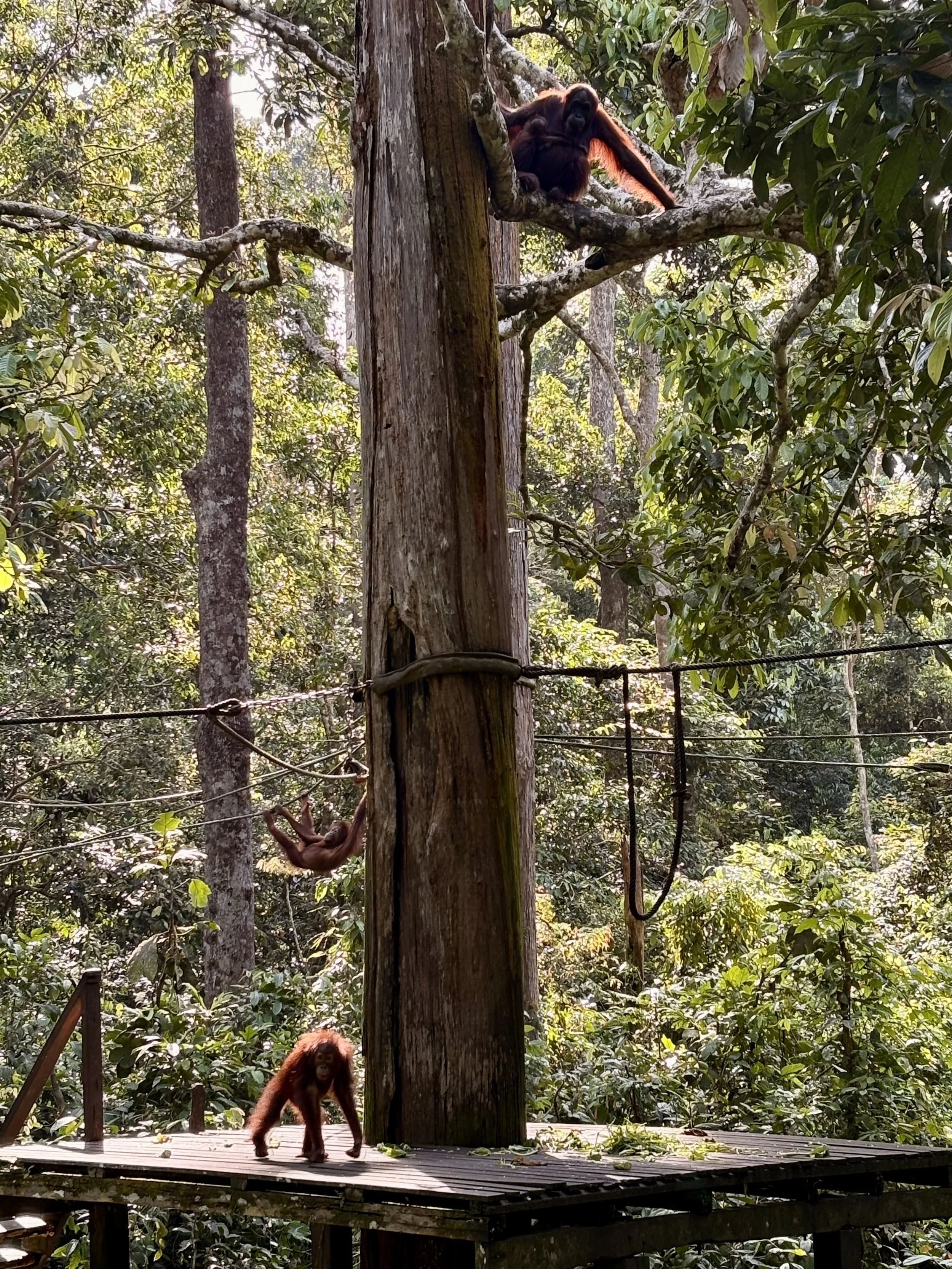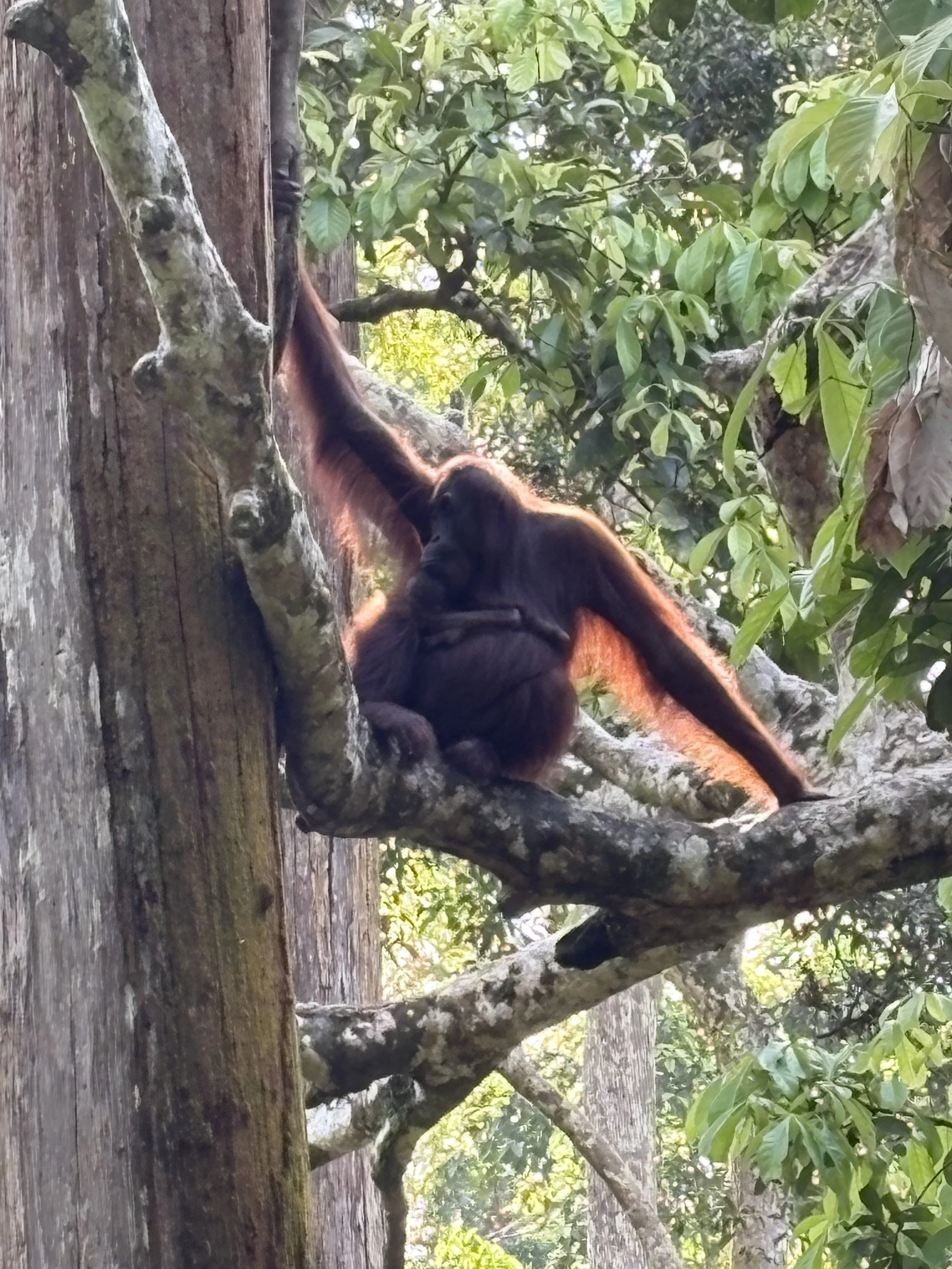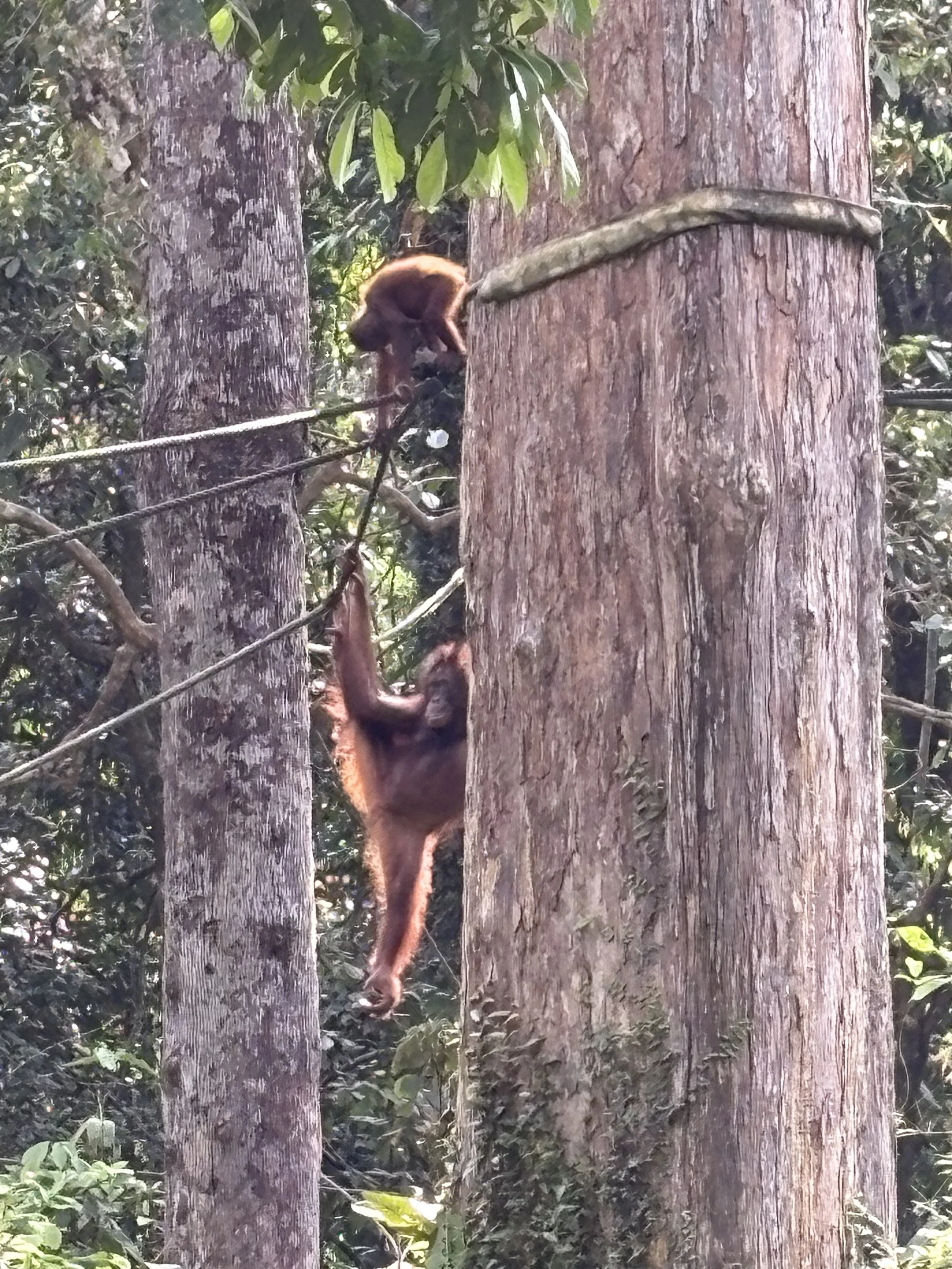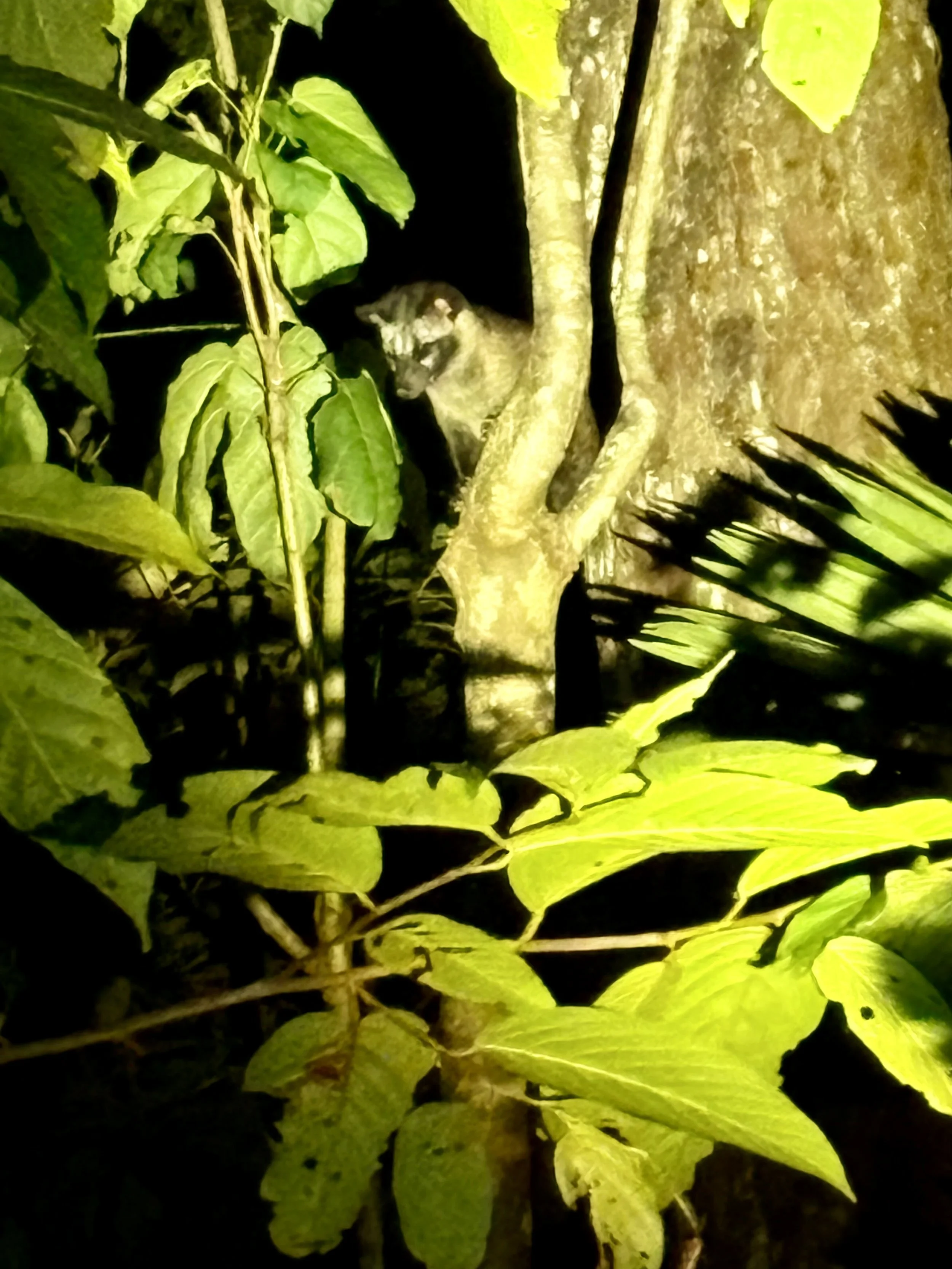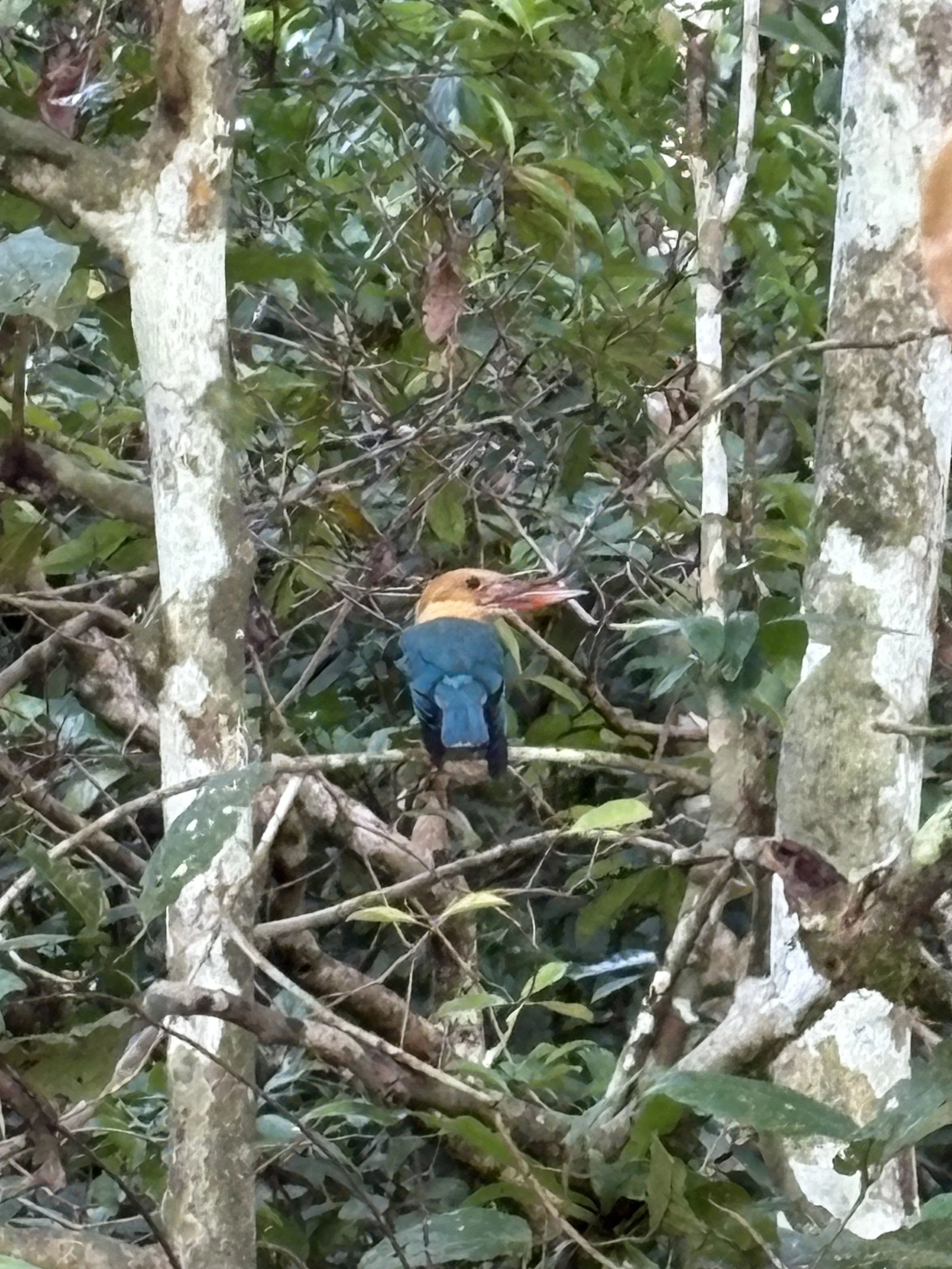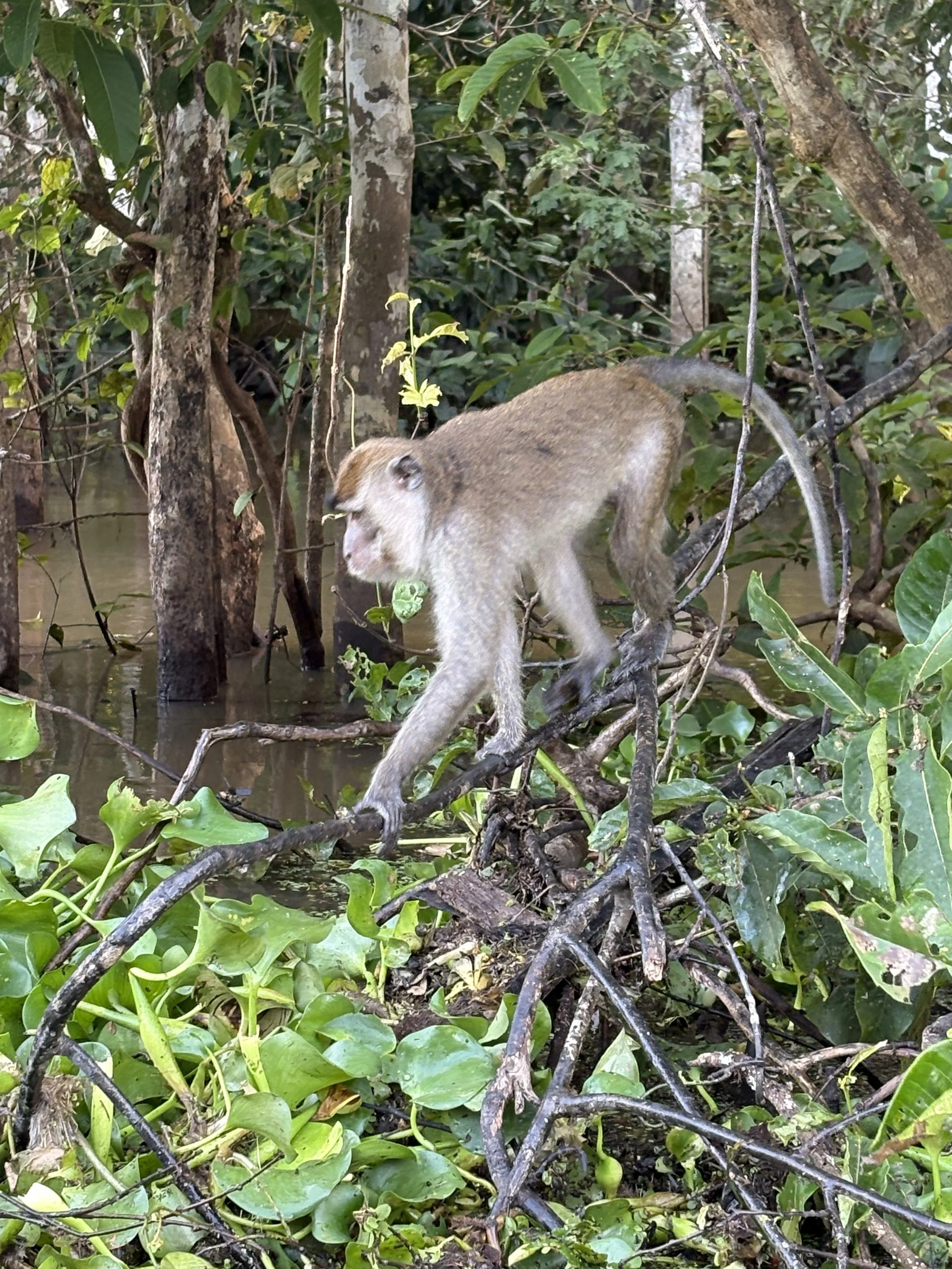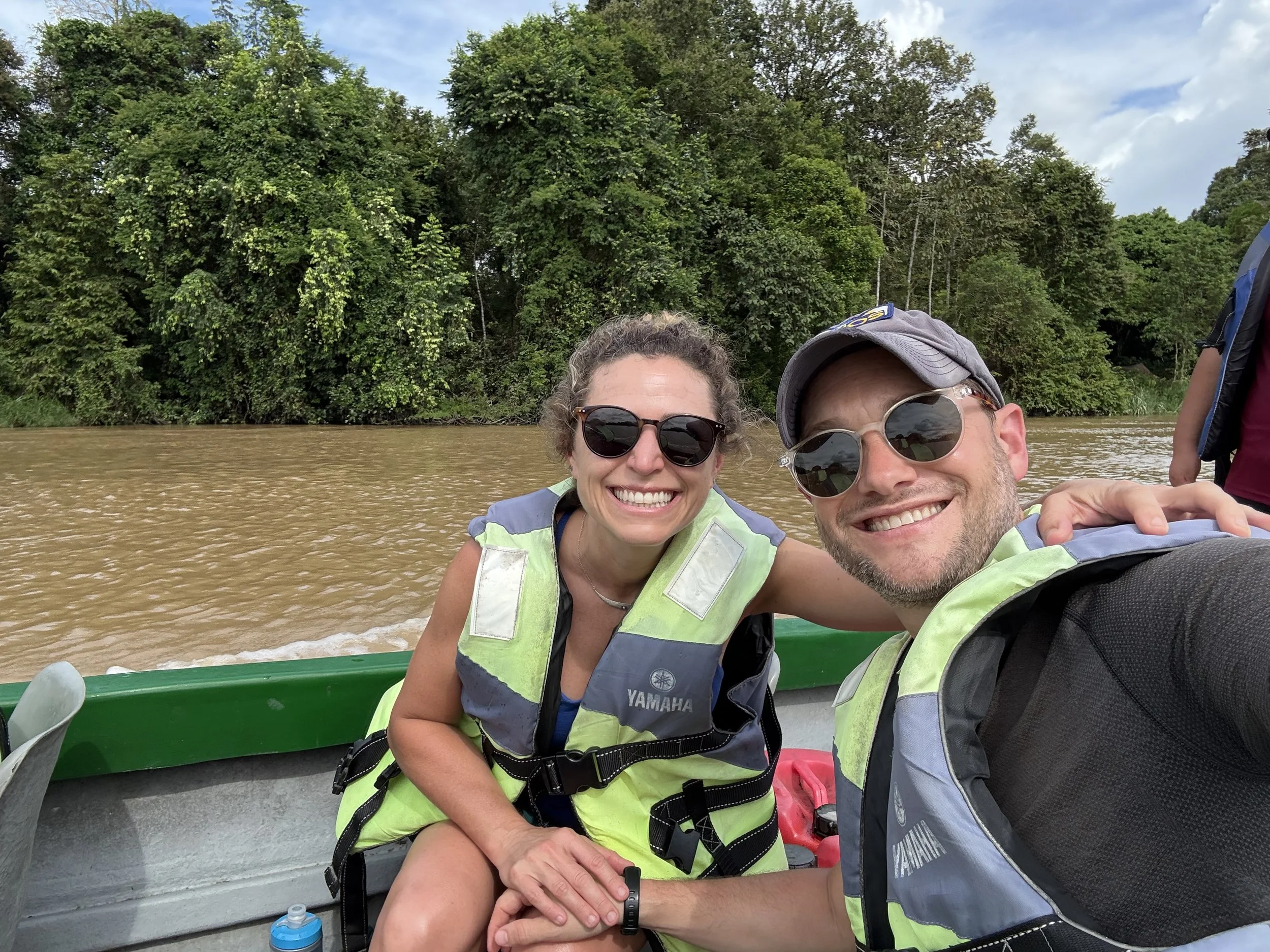Chapter 3.2: Borneo - Sandakan, Sepilok, & the Kinabatangan River
After debating between a 7-8 hour bus ride or a 45 minute, $30 flight, we opted to save the time and hopped on a small plane from Kota Kinabalu to Sandakan.
Sandakan is the second-largest city in Sabah (the Malaysian state of Borneo) and generally serves as the launching point for visiting wildlife reserves in northern Borneo. It’s often skipped entirely, with limited accommodation in the city itself, no sidewalks, and not much in the way of attractions. But I think we both enjoy the challenge of trying to squeeze some charm out of a place — even if you have to squint to find it.
We kicked off our day in Sandakan with a stroll into town, following the “Sandakan Heritage Trail”, a faded map from the Sabah tourism board that we happened to spot. It led us on a typical Malaysian walking tour down a series of very busy roads with no sidewalks in sight. A few city highlights:
Historically, Sadakan’s prime location made it a key commercial hub for Asian trade. So many traders from Hong Kong settled here over the years that it earned the name “Little Hong Kong of North Borneo” — a name the city still embraces, complete with themed signage and a “little Hong Kong” street with faux HK imagery and market stalls… but we struggled to find the resemblance.
Sandakan has a poignant World War II history, most notably the Sandakan Death Marches where some 2,500 soldiers perished. Before the forced marches, Sandakan was home to a large POW camp where Australian and British soldiers, captured at the Battle of Singapore, were held by the Japanese and forced into labor. Today, the site is the Sandakan War Memorial and Gardens, where you can see remains of the camp, while also surrounded by beautiful lily ponds, joggers, and the occasional wedding photo shoot.
Before Sandakan was developed into the city we see today, it was once a traditional Malay stilt village surrounded by water. The original settlement, Kampong Buli Sim Sim, remains a bustling part of town — still a stilt village built over the water with a few small differences. Now supported by concrete and, heartbreakingly, surrounded by heaps of trash brought in by the tide and the community — where there’s been little investment in infrastructure by the Malaysian government. Still, walking down the road next to Sim Sim at the end of a day, seeing families coming home from work and waving to giggling school kids, was by far our favorite part of Sandakan. You can stroll down the long wooden walkways that connect each home, peeking into open windows to see daily life. It reminded us both of houseboat communities in Seattle — how communal and intimate it all felt. I promise this is not as weird as it sounds — there was genuine mutual curiosity and warmth. Sim Sim also has a number of fantastic fresh seafood restaurants perched on the edge of the wooden walkways, where we had some the best whole fish and sunset views we had on the trip.
On our second day in Sandakan, we jumped in a taxi and headed to the famous Sepilok Orangutan Rehabilitation Center for some heart-meltingly cute primate time. Established in 1964, Sepilok was world’s first orangutan sanctuary and is run by the Sabah Wildlife Department. The center sits within the Sepilok-Kabili rainforest reserve, and while it houses 25-30 rescued orphaned orangutans, over 80 wild orangutans live freely in the surrounding forest.
We caught two feedings: one for the babies and another for the adults. The baby feeding was too cute for words. We spent 20 minutes sitting against a glass wall watching silly baby orangutan shenanigans in their enclosed sanctuary.
The adult feeding, which happens outside the enclosure, was quieter at first. After 15 minutes, we seemed to be out of luck and most visitors wandered off — but we lingered with a small group and a park ranger tipped us off to stay put. Eventually a group of wild orangutans sauntered out of the trees and we were able to watch them in quiet awe for a solid half an hour, watching them play, climb, cuddle, snack, and tease each other. It was spectacular fun. As a lifelong primate fan who’s always identified more as monkey than human, I can confirm: orangutans > humans.
After the sanctuary, while most sane travelers climbed into air conditioned tour buses or luxury lodges, we stubbornly stuck to our DIY ethos. Instead of spending $3 on a taxi, we walked — in full afternoon sun — to another section of the rainforest for a night tour with a park ranger. Despite some borderline heatstroke, it was completely worth it. Night pictures were difficult given my ol’ mini iphone but I tend to think those moments are better remembered than photographed anyway. We managed to see: a beautiful civet just checking us out from a treetop, a brilliantly colorful kingfisher bird sleeping in a tree, slow lories (so weird and cute), western tarsier (even weirder and cuter), and a red flying squirrel actually flying between treetops.
Might’ve opted for the $3 taxi over near heat stroke in hindsight but otherwise, no notes. Completely worth it to make the effort to see a new side of this wild world of ours.
After Sandakan and the Sepilok rainforest, we continued on to the Kinabatangan River — Malaysia’s second-longest — where we spent the next two days at a somewhat bizarre lodge run by a Malaysian chef and a Belgium businessman, alongside a cast of travelers.. we were not expecting to be served mediocre cordon bleu that deep into the rainforest. We went on three different boat trips down the Kinabatangan, which was beautiful if you can get past how devastated the area has been by palm oil plantations and pollution.
We ended our rainforest tour by hopping on a bus and riding four hours east to Semporna, a small coastal town and jumping-off point for some of the best scuba diving in the world — the last final leg of our Borneo chapter!
